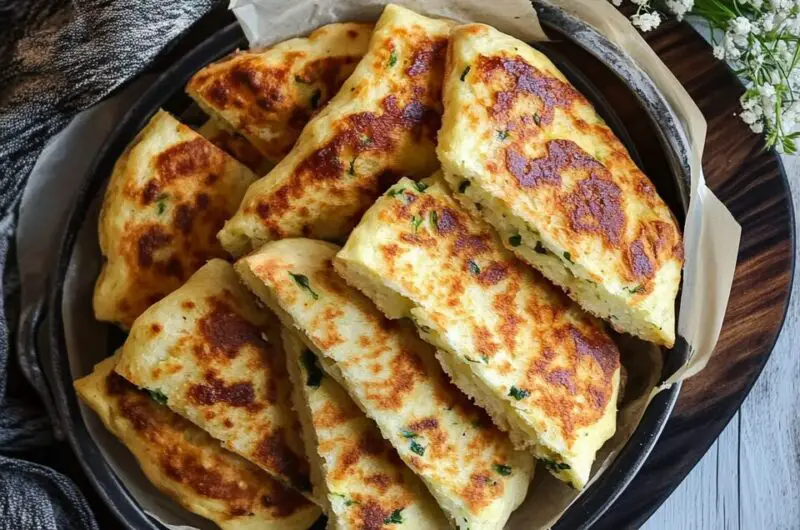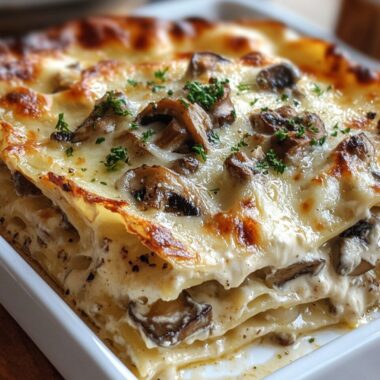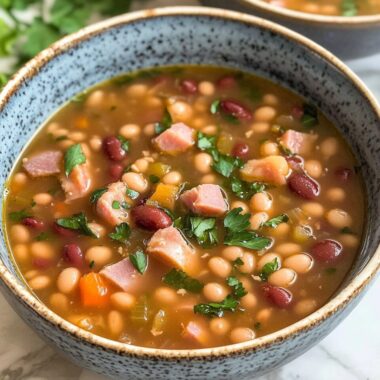The Irish Potato Bread, often referred to as Boxty, is a time-honored recipe that brings the flavors of rural Ireland to your breakfast table. This simple yet satisfying bread combines mashed and grated potatoes into a golden, crisp-on-the-outside, soft-on-the-inside flatbread that’s traditionally cooked on a griddle. Loved across Ireland for generations, it’s commonly served with butter or as part of a traditional fry-up. Whether you’re channeling your Irish heritage or simply craving a cozy, comforting carb fix, this dish is an easy and delicious way to bring some hearty, wholesome charm to your morning.
Full Recipe:
Ingredients:
-
1 cup mashed potatoes (cooled)
-
1 cup raw potato, peeled and finely grated
-
1 cup plain flour
-
1 tsp baking powder
-
1/2 tsp salt
-
Butter or oil for frying
Directions:
-
In a large bowl, combine the mashed potatoes and raw grated potato. Mix well.
-
Sift in the flour, baking powder, and salt. Stir together to form a soft dough.
-
Turn out onto a lightly floured surface and knead briefly until smooth.
-
Divide the dough into 4 portions and shape each into a small round disk about 1/2 inch thick.
-
Heat a skillet or griddle over medium heat and add a little butter or oil.
-
Fry each bread round for 3–5 minutes per side, or until golden brown and cooked through.
-
Serve warm with butter, jam, or your favorite Irish breakfast components.
Prep Time: 10 minutes | Cooking Time: 15 minutes | Total Time: 25 minutes
Kcal: 185 kcal | Servings: 4 servings
The Comfort and Heritage of Irish Potato Bread
Irish Potato Bread, often known as “Potato Farls” or “Tattie Bread,” is a traditional Irish favorite that has graced breakfast tables for generations. Its charm lies in its simplicity just a few humble ingredients transformed into something deeply satisfying and nostalgic. More than just a delicious bite, potato bread holds a place of cultural significance and culinary legacy in Irish homes, symbolizing both resourcefulness and comfort.
In this article, we’ll explore the fascinating background of Irish Potato Bread, its regional variations, how it’s traditionally served, modern twists, and why it continues to endure in kitchens around the world.
A Bite of Irish History
Irish Potato Bread dates back to the 18th and 19th centuries, during a time when potatoes were a cornerstone of the Irish diet. The potato was more than just a food source it was a lifeline, particularly for poorer families. After the introduction of the potato to Europe in the late 1500s, it became widely cultivated in Ireland thanks to its ability to grow well in the country’s wet, cool climate.
When flour was scarce or expensive, households looked for creative ways to stretch ingredients, and the result was potato-based breads and cakes. Irish Potato Bread was a practical solution for using leftover mashed potatoes from the previous evening’s meal. Combining them with flour and salt created a dough that could be quickly cooked on a griddle, producing a warm, filling bread with a lightly crisped exterior and soft, starchy interior.
While simple, the technique and tradition behind Irish Potato Bread are what make it timeless. Passed down through generations, each family might have their own preferred variation some richer, some plainer but all rooted in the same principles of thrift, warmth, and nourishment.
What Makes Potato Bread Unique?
Unlike yeast-based loaves or sandwich bread, Irish Potato Bread is unleavened and pan-cooked rather than baked in an oven. Its defining feature is its use of mashed potatoes usually cold and leftover from a prior meal which makes it denser and softer than regular bread. The flour acts primarily as a binding agent, giving just enough structure to hold the dough together.
Potato Farls are typically rolled into a circle and cut into quarters or “farls” (a word derived from the Gaelic fardel, meaning “four parts”). They’re traditionally cooked on a hot dry griddle or heavy-based pan until browned and puffed slightly.
Their flavor is subtle and earthy, and their texture is an irresistible combination of crisped edges and fluffy center. Whether eaten plain with butter, fried alongside bacon and eggs, or used to mop up sauces or gravy, their versatility makes them a favorite among all ages.
Traditional and Modern Serving Suggestions
In Ireland, Potato Bread is most famously served as part of an Ulster Fry, a traditional cooked breakfast especially popular in Northern Ireland. A typical Ulster Fry includes bacon, sausages, eggs, black pudding, tomatoes, mushrooms, and both soda bread and potato farls fried in a bit of bacon fat. It’s hearty, comforting, and satisfying a true breakfast feast.
But beyond the full Irish breakfast, Potato Bread has dozens of other uses:
-
Toasted with butter and jam for a quick and filling snack
-
Grilled with cheese or ham for a rustic sandwich
-
Dipped into soup or stew as an alternative to regular bread
-
Topped with poached eggs or avocado for a trendy brunch take
-
Served with smoked salmon or gravlax and a bit of crème fraîche for an elegant twist
In colder months, Irish Potato Bread becomes a cozy companion to warm meals. Its neutral taste makes it a fantastic vehicle for bold flavors, savory toppings, and even sweet applications if lightly buttered and sugared.
Tips for Making the Best Potato Bread
Despite its simplicity, there are a few tricks to ensure your Potato Bread turns out just right:
1. Use Plain Mashed Potatoes
Avoid mashed potatoes with milk, butter, or heavy seasoning. The cleaner the base, the better control you’ll have over the dough’s consistency.
2. Don’t Overwork the Dough
Too much kneading can make the bread tough. Mix until just combined and handle it gently to maintain its soft, fluffy texture.
3. Use a Well-Seasoned Pan
A dry, hot cast-iron skillet or griddle gives the best results. You want enough heat to brown the farls without burning them before the inside is cooked through.
4. Customize to Taste
Once you master the basic version, try adding herbs like chives, scallions, or rosemary for extra flavor. A bit of cheese folded into the dough can also elevate it from everyday fare to something special.
Regional and Cultural Variations
While Irish Potato Bread is iconic in Ireland, similar versions exist across other parts of the UK:
-
Scottish Tattie Scones: Very close in concept but thinner and often made with butter.
-
Welsh Potato Cakes: Sometimes sweetened and served as tea cakes.
-
English Potato Cakes: Often pan-fried and eaten with savory breakfasts.
Even beyond the British Isles, variations of potato-based flatbreads can be found in Eastern Europe and parts of South America. This highlights the global appeal of combining starch and flour into something comforting and sustaining.
Why This Humble Bread Endures
The ongoing popularity of Irish Potato Bread is a testament to how the simplest ingredients can yield the most comforting results. It’s affordable, quick to prepare, and incredibly adaptable to modern tastes and dietary needs.
In a world that often celebrates complexity and innovation, potato farls remind us of the beauty of minimalism. They offer a nostalgic taste of tradition and are an excellent example of waste-free cooking turning leftovers into the star of the meal.
The surge in interest for traditional and regional foods has led to a rediscovery of recipes like Irish Potato Bread. With its rich history and satisfying simplicity, it fits perfectly into today’s food landscape, where people crave authenticity and comfort in equal measure.
Conclusion:
Irish Potato Bread isn’t just a side dish or breakfast item it’s a reflection of Irish resilience, creativity, and warmth. Born from necessity and cherished as a tradition, it continues to be loved across kitchens and continents.
Whether you’re looking for a new addition to your brunch menu, a comforting winter snack, or simply a way to repurpose leftover mashed potatoes, Irish Potato Bread delivers on all fronts. It’s fast, budget-friendly, and deeply satisfying proof that the most beloved dishes often come from the humblest beginnings.
Add it to your cooking repertoire and you’ll find yourself reaching for this recipe again and again, not just for its taste but for the joy of bringing a piece of Irish heritage into your home.








